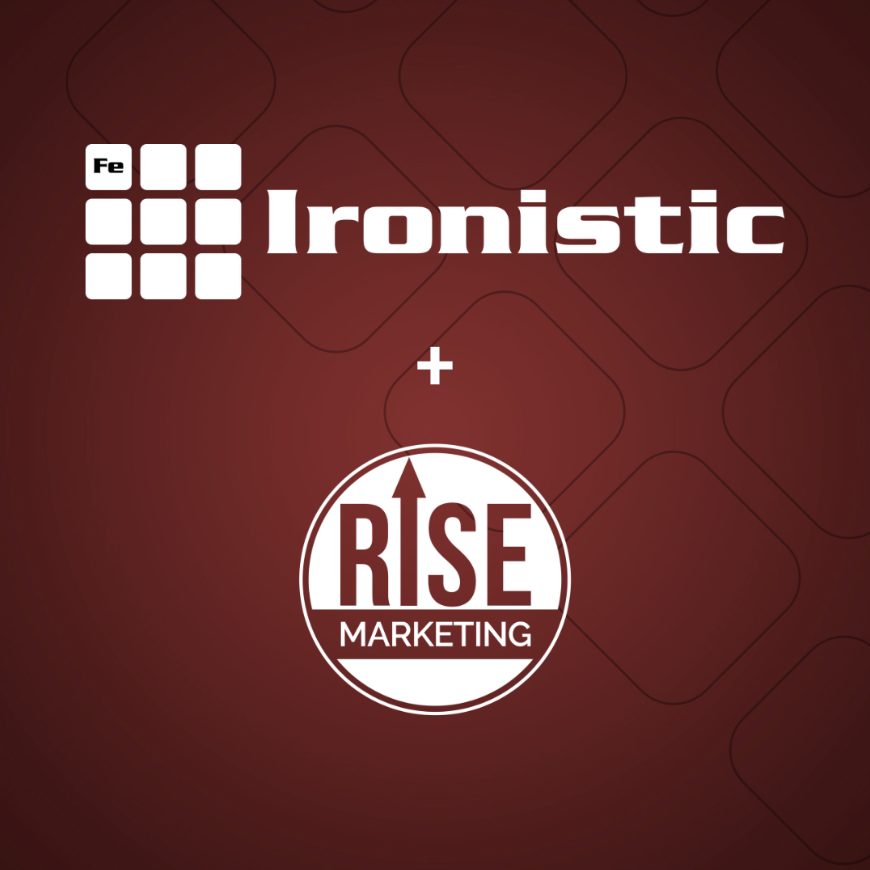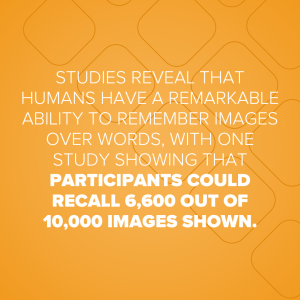
RISE Marketing Joins with Ironistic to Extend Marketing Communications Service Offering
Explore the difference between style guide vs. brand guide, what to include in each, and why you need both for…
Read More
In the high-speed digital arena, where every millisecond counts and patience is a thinning virtue, striking the perfect balance between aesthetic allure and lightning-fast performance is the holy grail of website optimization. One of the biggest culprits for slow page load speed is the images, videos, and animations that add interest and improve engagement. Poor image optimization, however, can bog down your loading speed leading to higher bounce rates. So, how to optimize images for web pages?
In this blog, we’ll not only cover the importance of images but the importance of the right images that will captivate without crippling your site’s load time. Plus we’ll take you through the intricacies of integrating animations and videos – ensuring they enhance, not encumber, your site’s speed. Unlock the secrets to keeping your site sleek, speedy, and superior in performance.
Whether you’re building from scratch, making a few updates, or implementing a digital marketing strategy – image selection, along with image optimization – is more important than ever. Sure, you have a lot of tasks in the development of a site: strategy, architecture, navigation, mobility, accessibility, design, functionality, and written content – that by the time you’re ready to check off images, you might be tempted to rush the process.
Don’t.
Now is not the time to underestimate the value of carefully-selected images for your homepage, product pages, blog, or digital ad. Here are a few reasons why you should care about your website’s images:
 Images hold immense power in communication, a fact supported by extensive research on the ‘picture superiority effect.‘
Images hold immense power in communication, a fact supported by extensive research on the ‘picture superiority effect.‘ Studies reveal that humans have a remarkable ability to remember images over words, with one study showing that participants could recall 6,600 out of 10,000 images shown.
Furthermore, images break down language barriers, a concept dating back to when shops used pictorial signs for identification and ancient civilizations relied on hieroglyphics for communication.
Whether encouraging users to purchase, donate, sign up, or inquire, the right images are crucial for driving conversions.
Navigating the vast sea of stock photo libraries for the perfect website images can feel like searching for a needle in a haystack – a very expensive and time-consuming haystack, that is.
Many businesses, our own included, turn to the treasure troves of Getty Images and the like, only to find themselves adrift in choices. The irony? With millions of images at your fingertips, you’re more likely to pick one just to check it off your list rather than because it’s the perfect fit. Remember, slapping any old image onto your site just to fill space is akin to wearing socks with sandals – it just shouldn’t be done.
But there is a solution. According to our very own Creative Manager, Sylvia Foerster, there’s an art to picking that jaw-dropping, stop-you-in-your-tracks image. It’s all about context and message.
Are you going for the bold statement of a hero image or the nuanced whisper of a background for your service page? Sylvia warns against the siren call of busy images that drown your text in a sea of visual noise. “If deciphering your message requires a magnifying glass,” she says, “you’ve already lost your audience.”
Additionally, cliché or overused stock photos should be avoided. In the realm of credit unions and their myriad loans, for instance, why settle for the mundane handshake or the jangling keys? Opt instead for images that spark joy – images that make you feel the wind in your hair from a brand-new car or taste the champagne toast in your newly remodeled kitchen.
Ultimately, walking the plank between personal taste and brand identity is a delicate dance. Every chosen image should sing in harmony with your brand’s voice, message, and tone.
Think of it as curating a gallery where every piece tells a part of your story, minus the monotony of overused visuals. Remember, in the quest for the perfect website imagery, mediocrity is the true villain.
Now that we’ve answered the question that ‘YES’ images are vitally important to the design of your website, it’s time to make sure your website doesn’t dawdle like a sloth in the digital sprint.
Here, image optimization emerges as your secret sauce. It’s where the magic happens – balancing the glamor of high-quality images with the nitty-gritty of file size efficiency.
 Slim Down Those Pixels:
Slim Down Those Pixels: Like an overpacked suitcase, bulky images can bog down your site’s speed, sending potential visitors off to more responsive sites a.k.a. your competitors. Compress those digital behemoths to shave off precious milliseconds from your site’s load time, reducing the bounce rate, which, if high, can negatively impact your search engine rankings.
In the grand digital library, a well-named file shines. “Farmers-market-alexandria-va.jpg” is a treasure map for search engines, while “Image1000444.jpg” might as well be invisible ink. It’s about ensuring when someone’s on the hunt for what you offer, you’re the X that marks the spot.
These tiny text descriptors pack a mighty punch for SEO, turning your images into silent ambassadors for your e-commerce prowess. Craft them with care – clear, descriptive, and brimming with keywords – to ensure no visitor navigates your site with a blindfold.
Not all image formats march to the beat of the same drum:
These mini marvels can turn into speed bumps if not properly streamlined. Equip them with their own alt tags, ensuring they’re lean, mean, and ready for action without weighing down your pages.
Beware these wolfish pixels in sheep’s clothing. Sure, they dress up your site, but at what cost? Trim the fat by reducing file sizes or swap them out for CSS wizardry to keep your site light on its feet.
With the fundamentals of static imagery in your arsenal, it’s time to master the dynamic duo: animations and videos. They can be the life of the party, but without a careful hand, they’re more likely to crash the bash. Here are some best practices for these two features:
Animations should be the sprinkle, not the icing. Use them to enhance, not overwhelm. Heavy animations can slow down your site, so opt for lightweight CSS or SVG animations that don’t compromise your site’s performance. Remember, the aim is to enhance the user experience, not detract from it.
Videos, the blockbuster content of the web, need a game plan. They can significantly increase engagement but at the cost of slowing down your site if not optimized correctly. Here are a few tips:
Optimizing images is critical, but fraught with challenges. However, with these performance techniques in your arsenal, you’re well-equipped to face them head-on. Remember, the goal is a website that’s not just fast, but also functional and engaging across all devices.
At Ironistic, we don’t just understand the importance of website performance; we live and breathe it. Whether you’re looking to optimize images, animations, and videos, or truly want to take a deeper dive with a website audit, our team is ready!
Don’t navigate in the dark. Let Ironistic be your guiding light, and we’ll help you translate your vision and brand into a dynamic online presence.
Comments
There are currently no responses.